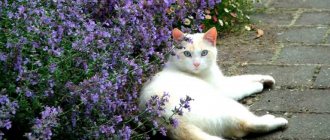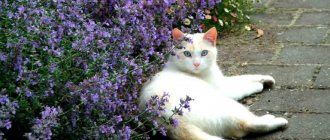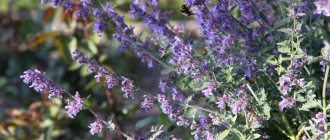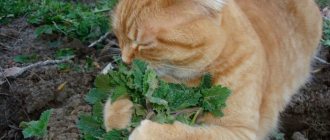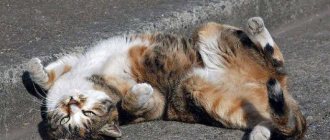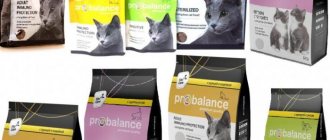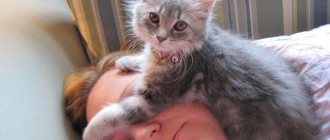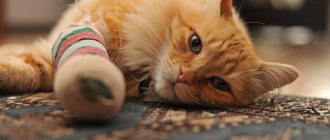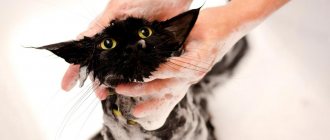Hello, dear readers!
Today we’ll talk about the benefits and harms of catnip for humans.
Catnip, or catnip, is a plant that is very stimulating to cats due to its aromatic essential oils. And for humans, this is, first of all, an excellent remedy for many health problems. Catnip is used to treat skin diseases, solve hair problems such as dandruff and irritated scalp, relieve cramps and fever, solve stomach problems, ease menstrual pain, relieve stress and improve sleep. Other benefits of this plant include benefiting the kidneys, aiding in weight loss, supporting the wound healing process, and providing the body with vital nutrients.
Back in the early 15th century, it was common among Europeans to drink tea from catnip leaves. It attracted everyone with its taste and aroma. Later it was possible to identify the healing properties of this plant.
If a cat smells catnip, it will become very excited for about 10 minutes. The animal will purr and roll on the ground. Catnip, of course, will not have such an effect on humans, but this plant can heal us from many ailments - among which, by the way, is stress. Catnip grows throughout much of Asia, including China, and parts of Europe. However, now this plant can be found in any corner of the world. The properties of catnip are associated with the presence of a certain amount of chemicals in it, such as terpenoids.
How can we take catnip? Of course, brew tea from the leaves of this plant. Inhale the essential oil that is obtained from catnip. Dried herbs can be added when preparing hot dishes. You can make tinctures with catnip. There are a lot of ways. This plant is used as an alternative to drugs. The fact that it really copes with many diseases has been proven by scientific research. We will consider below what diseases are treated with catnip.
Catnip: what it looks like
catnip looks like : it is a herbaceous plant, usually it is one long dense stem, reaching a height of 1 meter, leaves are located along the entire trunk, the largest at the base, small ones closer to the top. The leaves are triangular-ovate in shape, with jagged edges, and a fluffy surface. At the top of the stem there are flowers, small, collected in the form of brushes. There are plants with flowers of white, yellow and even light lilac. The root is long, branched, woody. Catnip blooms in July, and in August the fruits ripen - small brown nuts.
Why is it needed and why is grass so attractive to cats?
When a pet eats or smells enough of a fragrant plant, it falls into a state of euphoria. He begins to meow loudly, paws at the bedding under him, the cape on the furniture, the blanket, he can run aimlessly, rub against all objects in a row and even roll on the floor in complete ecstasy. The euphoric state lasts 10-20 minutes, and then the relaxation phase begins. The animal calms down and returns to normal, even slightly inhibited behavior.
However, there is a category of animals on which catnip does not have a stimulating effect. Just as a person calms down from the aroma of peppermint, a pussy goes limp from the smell of lemon catnip. And for a third of pets, according to research, greens have no effect at all. Biologists and zoologists agree that the reaction to tasty grass is inherited along with genes. Therefore, you can determine whether your kitten will react to mint in the future only when he reaches the age of sexual activity. Yes, yes, kittens that are not sexually mature do not perceive the smell of grass, be it fresh or dried.
The explanations why grass is pleasant for your pet are very simple. The cat's body reacts sensitively to the essential oil contained in excess in the plant. It is called nepetalactone and has an irritating effect on the olfactory receptors. Neurons begin to send signals to the part of the brain that is responsible for the psycho-emotional state of the cat and the behavior of the ward changes radically.
Every pet owner who is concerned about the health of their pet should know that catnip is completely safe for the cat. It does not cause drug addiction and has no side effects. You just don't need to give a fragrant plant every day. However, the pet also intuitively senses that it is time to stop and almost never overdoes it with eating or sniffing grass.
Catnip: where it grows
Where does catnip ? Almost everywhere: in Europe and Asia everywhere, in Africa in the northern part. You can meet it everywhere - in wastelands, in ravines, along roads and in the forest. The plant is unpretentious, easily tolerates any climate, even in the most severe frosts the root system survives and produces new shoots in the spring. It is even possible to grow catnip in garden plots; it does not require special care.
All parts of the plant are used for medicinal purposes, so you can collect catnip constantly: it is better to hunt for shoots and leaves in the spring, flowers in June, and fruits in August or September. It is better to dry the raw materials in the open air, but you can also dry them in the oven at a low temperature.
Description and properties of catnip
Catnip has a strong scent with hints of lemon, which is why this plant is called lemon catnip.
The stems and leaves of the plant can be light green, or green mixed with white or pink.
Mint flowers are small, white, pink or purple.
Catnip has long stems that spread along the ground, forming thickets in which cats love to spend time.
Typically, more than 10-15 cats gather in such places, which can infect your pet with fleas or ear mites .
To protect him from such troubles, you should let him outside wearing a flea and tick collar .
If your cat has picked up fleas, it can be treated with a special product .
Advice! The plant is unpretentious in care and grows in Russia both in wild and cultivated forms. Therefore, anyone can grow catnip at home.
Why is catnip needed and how can it be used?
Due to the content of aromatic essential oils in mint, this plant is actively used for a wide variety of purposes:
- Catnip is used in folk medicine as a sedative and to treat insomnia.
- In industry - for the production of perfumes and soaps.
- In cooking, catnip is added to herbal teas, salads, meat and fish dishes, ice cream, and cocktails.
In appearance, catnip leaves resemble the leaves of the widespread lemon balm.
Catnip: properties
Despite its relatively poor chemical composition, catnip has a number of beneficial properties:
- For humans: calming and sedative – calms the nervous system, normalizes sleep, fights stress. Analogs - medicinal herbs: lemongrass, dandelion root, St. John's wort.
- Painkiller - effectively fights headaches, abdominal pain, and also in women during menstruation.
- Bactericidal - kills bacteria, microbes, in particular, used for abrasions and minor skin damage as a disinfectant. Black elderberry, sage, and propolis can boast the same properties.
- Antiseptic – for inflammatory processes of the nasopharynx, removes inflammation and kills viruses.
- Activates the gastrointestinal tract and normalizes digestion.
Mistake #6. Do not distinguish between Omega-3 and Omega-6
Omega-3
and
Omega-6
are healthy and important unsaturated fatty acids for the body. However, there is no additional need to take Omega-6 - we get this component in sufficient quantities from food - vegetable oils, poultry, oatmeal, etc. Excess Omega-6 can play into the hands of inflammatory processes in the body.
Catnip: for humans
Although catnip is considered a pet herb, it is also very beneficial for humans. First of all, it has a positive effect on the nervous system - it calms, relieves anxiety, irritation and removes the effects of stress. Catnip decoction helps cope with severe headaches and migraines.
The herb is also very useful for the gastrointestinal tract: in addition to improving digestion, the active ingredients relieve colic and flatulence.
Catnip can be given for poisoning; it acts as an absorbent, for diarrhea and indigestion. Decoctions and infusions can be used as a disinfectant and antibacterial agent.
Mechanism of action on cats and people
Catnip has different effects on humans and animals. For cats it is mostly a drug, but for humans it is a cure for a number of diseases.
| Effects on cats | Impact on people |
| Helps accustom the animal to a scratching post, tray, bowl, and place of lying. | Regular use relieves constant headaches. |
| Helps fight insect bites. | Helps fight bacteria, heals scratches and wounds. |
| Reduces stress and calms. | Has a calming effect and reduces stress. |
| Coaxes the animal while combing. | Improves mood, increases performance. |
| Creates a hallucinogenic effect. | Helps get rid of insomnia and nightmares. |
Some of the described effects on humans and cats are similar, some are not. The effect of catnip on humans has been studied in more depth, so there is a wide range of effects on different organ systems and for different problems. For cats, it is mainly an attractive and calming agent.
Catnip: for sleep
Catnip is a natural sedative for humans. In reasonable quantities, it can also be used to improve sleep. If a person is constantly stressed, tired and anxious, then this plant is, after all, better suited as a mild sleeping pill, since it calms the nervous system and improves sleep.
Ashwagandha and melatonin can also be used to improve sleep and as a sleeping aid.
Consultation with an endocrinologist is a vector for your internal balance!
Liberanskaya Natalya Sergeevna
— endocrinologist, doctor of the highest category with more than 10 years of experience. Natalya Sergeevna sees patients with a variety of problems and issues within her specialization - excess weight, diabetes, thyroid problems, increased fatigue and drowsiness, pregnancy, menopause, metabolic disorders and endocrine glands.
Natalya Sergeevna is the author of the popular blog @doctor_liberanskaya, in which she regularly gives subscribers advice on maintaining health and therapy. All recommendations are based on the principles of evidence-based medicine and our own professional experience.
From 2021, Doctor Liberanskaya Natalya Sergeevna
accepts patients at the Pirogov Clinic - you can also undergo a consultation with an endocrinologist of the highest category.
To make the appointment informative and useful for you, we recommend taking the following tests:
- List of endocrinological tests
You can undergo the examination quickly, without queues and at a time convenient for you in our clinic.
Thanks to the latest diagnostic equipment and a team of qualified specialists from the laboratory of the Pirogov Clinic, you can be confident in objective and reliable results.
Catnip: for cats
Catnip is so named because this herb is primarily intended for cats. It acts similarly to valerian: animals become overly excited, somewhat aggressive and unpredictable. But catnip is essential for the cat's body, as it has a positive effect on the nervous system. It is best to give the herb after suffering stress; the active substances excite the nervous system and allow cats to “survive” an unpleasant event. But it is impossible to take this medicine frequently, firstly, addiction quickly sets in, and secondly, the animals become overly nervous and hyperactive. Catnip for cats can be purchased at a veterinary store, or you can grow it at home on a windowsill, the main thing is to keep pets away from the seedlings.
All about herbs and more
General information
Family: Lamiaceae/Lamiaceae. Botanical name: Nepeta cataria L. Pharmacy: Folk names: field balm, catnip, cat grass, cat drink, lemon catnip, mint catnip, catnip, fragrant horehound, matoshnik, sore grass.
Planet: - Venus. Zodiac sign: - Cancer. Element: - water. Deities: - Language of flowers: - maternal care. Main properties: - love, contact with animals. Description: Perennial herbaceous plant 40-100 cm high. Outwardly resembles mint. Stems are branched, tetrahedral. The leaves are opposite, cordate-ovate and oblong, pubescent, sharp, pollen-shaped. The flowers are five-membered, two-lipped, whitish, small, collected in dense paniculate-spike-shaped inflorescences. The flowers may be white or have a bluish-purple tint. The inflorescence is 3.7-8 cm long, 1.6-2.6 cm in diameter. Dry fruit, breaking up into 4 nuts. Weight of 1000 seeds (nuts) 0.53 g. Catnip is a winter-hardy plant. Light- and moisture-loving. Prefers soil that is structural, light in mechanical composition, fairly fertile and free from weeds. It has a strong, unique odor and a pleasantly bitter taste that attracts cats. Places of growth: Grows in shrubs and gardens of the steppe and forest-steppe zones of the European part of Russia, in Western Europe, in Western and Central Asia, in the Caucasus, in Western Siberia, in the Far East. Catnip is also introduced into North America, South Africa and Japan. It is cultivated in Western Europe and the USA. It was introduced into cultivation in Moldova as an aromatic plant. Grows among bushes, in vacant lots, near roads. Parts used: The above-ground part of the plant is used: stem, leaves, flowers.
Collection and preparation
Catnip is collected during the flowering period (June-August), cutting it at a height of 10 cm. It is dried in the air, under a canopy, in attics, in well-ventilated areas.
The shelf life of raw materials is 2 years. Dried raw materials have a gray-green color. If the plant is mowed in the flowering phase, it grows back and blooms again in August-September. Catnip produces the highest and most consistent yield in the second or third year of life. Medicine:
Catnip has long been used in medicine.
This plant has a diaphoretic, anti-inflammatory, expectorant, restorative, analgesic, sedative, antipyretic, hemostatic, inducing and regulating menstruation effect. Increases appetite, improves stomach and intestinal functions, improves digestion, increases the amplitude of heart contractions, and eliminates cramps. Externally, catnip is used as an antibiotic in the treatment of boils, tumors and skin inflammations. Catnip is used in the prevention of lead poisoning. In Tibetan medicine, Siberian catnip is used to gargle for tumors in the throat. Traditional Medicine:
Catnip is used in folk medicine in the form of decoctions and infusions. The decoction increases the body's defenses, has a positive effect on the cardiovascular, nervous and respiratory systems, and stimulates appetite. It is used for anemia, cough, liver diseases, jaundice, intestinal atony, hysteria, headaches, gynecological diseases, and also as an anthelmintic. The calming effect of catnip is quite strong, so it is best to take it at night. In a mixture with other plants, it is used for chronic bronchitis (soothes cough). Catnip infusion is used for anemia, exhaustion, to stimulate appetite, for stomach catarrh, convulsive cough, difficulty breathing, shortness of breath, liver diseases, women's diseases, nervous disorders, hysteria, headaches, for spasms and as an anthelmintic. Externally, the herb is used for various skin diseases. Catnip essential oil has high antimicrobial activity and fungicidal action against molds: mucor, penicillium, aspergillus. Catnip is good not only for people, but also for animals. First of all, for cats who have an inexplicable passion for this weed. What cats don’t do around this flower! They eat it, rub against it, smell it, chew the leaves. This weed makes them frisky and playful. When cats come under its influence, their mood changes: they roll on the ground in apparent ecstasy and chase imaginary mice. They come back again and again for a fix. Catnip affects both sexes, both males and females. Very aggressive and excitable cats become calmer and more balanced. They behave much calmer in stressful situations, showing no signs of aggression or fear. Phlegmatic individuals, after contact with mint, become mobile, playful and more contactable with their owners. This herbal remedy will make traveling in a car, visiting a veterinarian, or moving an animal to a new apartment easier. The essential oils contained in the leaves attract not only domestic cats, but also lions, pumas, and leopards. In ancient times, lynxes were caught using catnip as bait. Active ingredients: Contains essential oil (up to 0.5%) with a pleasant lemon odor, the main components of which are nepelactone (42%) and nepetalic anhydride, the composition also includes geraniol, dipentene, carvalol, limonene, nerol, pulegone, terpenes, citral, citronellol .
In addition to essential oil, the herb contains tannins and terpenes. Magic:
The smell of catnip helps balance emotions, has the magical ability to infuse new strength into a person, relax and refresh.
In voodoo magic, catnip is added to gris-gris bags to bring health to a person. Dried large catnip leaves are used as bookmarks in witchcraft books. Catnip will help you establish a spiritual connection with your pet. You can let your cat smell the grass and play with it. Catnip is used in love magic. It is believed to help rekindle love. You can put it in a bag of dry herbs or add it to incense, especially with rose petals. This will attract the attention of your loved one. According to gypsy magic, in order to get passion from your friend, you need to make catnip tea (one spoon of the plant per cup of boiling water). Add honey to the drink and drink before going on a date. In addition, catnip is used in love and beauty spells and spells to keep an unfaithful spouse. And here are the magical properties of catnip, described by a medieval magician: Its smoke drives creeping reptiles away from houses, And they say that if you drink it with wine, it will drive out hiccups; In the same way, love often extinguishes attraction (c) “On the properties of herbs” Odo of Mena (11th century) It is curious that with the help of catnip one can both inflame love attraction and extinguish it. How to use the plant to expel diseases or “creeping reptiles”, and in order to tame domestic animals. It turns out that if you use catnip correctly and wisely, it can be useful for a variety of purposes. Myths and Legends:
Catnip was first appreciated in Egypt, a country where cats were highly revered. This herb was sacred to the goddess Bast, the cat goddess, the goddess of the moon, fun, femininity, fertility, joy, dance and fun. This herb was given to cats who lived in the temples of the goddess Bast. Among the Celts, catnip was one of the sixteen medicinal herbs that form the basis of Druidic medicine. In the Middle Ages, in the gardens of northern Europe there were few flowers (roses, lilies and peonies), but there were many spicy and aromatic herbs: astrantia, lovage, catnip, and young. These herbs were among the required plants for planting, as they had medicinal properties and were useful in the kitchen. Also in the Middle Ages in Europe, catnip was used to terminate pregnancy: A woman will have a miscarriage after drinking or applying the grated herb. Polei (mint) Take it often and the woman will have a miscarriage. Regula also appears when drunk with warm wine; Using the same method, the lingering placenta is driven away by grass. (Recommendations from Odo of Mena from the book “On the Properties of Herbs.”) In the same Middle Ages, demons were summoned by burning a mixture of plants that included catnip. In China, herbs were grown in gardens, among them catnip. A variety of herbs were believed to attract positive energy.
Ritual for success in all endeavors Moon phase: waxing moon (the day after the new moon). Ritual: Place a small piece of clear quartz, a small piece of aventurine and a coin in the bottom of a ceramic pot, then fill the pot with soil. Plant the seeds of one of the following plants in the pot: parsley, money tree, catnip (catnip), daisy, mint or columbine. These seeds symbolize your new monetary endeavor - a new job, a new project, an investment, and the like. Take care of your plants carefully and as they grow, your welfare will also increase.
In Roger Zelazny's fantasy novel A Night in Dreary October, the dog Sniff promises his cat friend Graymalk to supply catnip booze if they survive their adventures:
“On the way to the river I found a large patch of catnip.
If we both survive, I'll get you a drink. - Thank you. She stretched. I also stretched and yawned. We nodded to each other and went our separate ways. Recipes, infusions, decoctions:
Infusion of catnip herb: 1 tablespoon of raw material is poured into 300 ml of boiling water, infused in a sealed container for 2 hours, then filtered. Take 1 tablespoon 4 times a day 30 minutes before meals. Recommended for headaches and nervous disorders
Catnip Love Potion: Used to get multiple potential partners to notice you. 2 parts dill; 1 part marjoram; 1 part catnip. To attract men, add 1/2 vanilla pod. To attract a woman, add 1/2 vanilla or cinnamon pod. (From the book “The Magic of Love” by Edaine McCoy).
Love tincture “Herbs from Bald Mountain”: red wine, catnip, hare grass, a spoonful of honey, lemon juice, spring or melt water. Add 1 tbsp to red wine. mint, 1/2 tsp. hare grass juice, 1 tbsp. honey, juice of 1 lemon, 3 tbsp. spring water. Bring to a boil, cool, leave for 3 hours and strain.
A decoction for insomnia in a child. Valerian root, hops, chamomile flowers, Baikal skullcap, passionflower (passion flower), catnip - in equal parts. Decoction: 3 tbsp. Pour 2 cups of water over spoons of the mixture, boil for 5 minutes, leave for 1 hour, strain. Drink half a glass after meals 3 times a day. Course: 2-3 weeks.
For skin diseases: Yellow gentian, blueberries, catnip, goldenseal, myrrh resin, fenugreek, comfrey, yellow sorrel, St. John's wort, blue verbena, starwort root, laurel berries, Irish moss, prickly ash, aspen, elecampane - in equal parts. Make a collection of 5-7 plants. Infusion: 3 tbsp. spoons of the mixture pour 400 ml of boiling water, leave for 30-40 minutes, strain. Drink 1/3 glass 3 times a day, but for the first 2-3 days drink 1 time a day.
Powder of happiness. 2 parts lavender, 1 part catnip, 1 part oregano. When you want to lift your spirits, sprinkle this powder in a circle on the floor or ground and sit inside it, absorbing the energies of the powder. Imagine how these energies surround you, filling you with joy.
To relax muscles and relieve pain.
Recipe for tea made from valerian, catnip and skullcap. Boil 2 cups of water. Remove from heat and add 1 teaspoon of each herb. Leave for 20 minutes. Reheat if necessary, but do not bring to a boil. Use in cooking:
Leaves and shoots are used fresh and dried as a spice for salting herring, as an additive to spicy-sweet sauces, main courses, drinks, sweet dishes, as a seasoning for salting and pickling. The plant is also used in the preparation of cheeses. In Tatarstan they flavor salads with it. Essential oil (with a strong lemon scent) adds a special smell and taste to confectionery, tonic and alcoholic drinks. Catnip is used to make tea. It is also added to the dough to give a special smell and taste to confectionery products.
Catnip: Extract
Catnip extract is an extract of the active substances of the plant, which is several times more effective than dried herb. The extract can be used to prepare traditional medicines, but it will require much less than its dry counterpart. The extract is included in dietary supplements, capsules and tablets; it is usually a compressed powder, which, when entering the body, quickly dissolves and begins to act instantly. In the online store you can buy various forms of the extract: dry powder, liquid alcohol-free essence.
Conditions for growing catnip
Catnip is a plant that prefers partial shade. However, several hours of direct sun per day is necessary for good growth. When planted in moist, well-drained, moderately enriched soil, catnip will grow thickly. If you pinch off the flower buds, it will grow bushier, and when you think the plant is getting too large or patchy, you can trim it back.
Catnip has tiny seeds that self-sow. Therefore, it will appear every year naturally. It can also be grown in pots if weather conditions or lack of space do not allow this to be done in the garden.
Fresh leaves can be collected at any time, but young leaves are best collected before flowering, then they are milder in taste. To dry mint, you need to cut off the stems, leaves and flowers as close to the ground as possible. Hang them in the shade with the flowers facing down, and after they dry, peel off the leaves, place them in an airtight jar, and store them in a dark place.
Catnip: capsules
1). Supplements with catnip are available in the form of powder, liquid extract and capsules, the latter are considered the simplest and most convenient to use. You can order a variety of drugs in the online store, but you should pay attention to the dietary supplement "Catnip Herb" from Nature's way . It contains only catnip , namely, ground shoots, leaves and flowers. 1 capsule contains 380 mg of extract, but a single dosage is 760 mg, so you need to drink 2 capsules. This drug should be taken as a mild sedative or sleeping pill.
2). Dietary supplements are also available in capsules for children; in particular, you can order the drug “Calm Child” from Planetary Herbals . The drug is absolutely natural and safe and is suitable for children over 6 years old. It includes:
- Cat mint,
- Chamomile,
- Melissa,
- Hawthorn,
- Liquorice root,
- Taurine,
- Gotu Kola extract.
Children are recommended to give this drug as a sedative, as well as to improve concentration and attention. The package contains 150 capsules of 440 mg, a single dose of the drug is 880 mg, this amount of substance is contained in 2 tablets.
Mistake #3. Don't know what vitamin D to take
Cholecalciferol
- an inactive form of vitamin D, it is what is needed to correct its deficiency so that all body systems work properly and you feel good.
The drug cholecalciferol is safe - the likelihood of overdose is low. But there is another, active form of vitamin D - calcitriol
. It can only be taken under the supervision of a physician and for medical reasons.
Mistake #4. Taking vitamin D does not always mean normalizing its levels
Vitamin D is poorly absorbed in the following situations:
- Problems with the gallbladder (or rather, with bile outflow) - vitamin D is fat soluble, and bile is necessary for the absorption of fats.
- Inflammatory bowel diseases and microflora disorders.
- Excess weight
- D-hormone is deposited in adipose tissue, so obese patients need to take vitamin D in larger doses. - Genetic abnormalities - there are no receptors sensitive to vitamin D.
Catnip: instructions
The instructions for medications and dietary supplements containing catnip contain instructions for use. The main thing to remember is that you can take no more than 2500 mg per day, usually this amount is contained in six capsules or tablets.
Catnip: How to Take
How to take medications with catnip ? Drug manufacturers recommend taking two tablets three times a day, preferably with meals. Some experts definitely recommend taking medications a couple of hours before bedtime.
Mistake #7. Ignore iron (ferritin)
Iron deficiency leads to anemia, fatigue, muscle weakness, dry skin, and hair loss. Women are at risk for iron loss due to menstruation; vegetarians and vegetarians do not receive the required amount of this microelement.
Mistake #8. Taking Iron Blindly
In terms of absorption, iron is a particularly capricious microelement. It should be taken with particular caution. The point is not even that the drug in drops stains tooth enamel. Excess iron is deposited in internal organs (liver, pancreas, thyroid gland), leading to serious disorders: hemochromatosis, cirrhosis, hepatitis, melasma (dusty bronze skin color).
Iron is poorly absorbed with dairy products and coffee.
On the contrary, vitamin C, B12, and folic acid contribute to the favorable absorption of iron.
If iron is poorly absorbed, the doctor prescribes special complexes
.
Catnip: contraindications
Although catnip has a positive effect on the body, there are still contraindications for use. Like any other medicinal herb, catnip can cause an allergic reaction. Pregnant women, nursing mothers and young children (under 3 years of age, or better yet wait until 6) should not take medications with this plant. Hypotonic patients should also take medications with caution, since catnip can significantly reduce already low blood pressure. In any case, it is better to consult a doctor before taking it.
Growing catnip in the country
Thanks to its healing, gastronomic and high decorative properties, lemon catnip is a frequent guest in the flowerbeds of Russian gardeners. How to grow grass in temperate latitudes? First of all, you need to decide whether you will sow it directly into the ground or first breed seedlings. As a rule, the second option turns out to be more reliable and more effective than the first.
For seedlings, boxes with light, loose, slightly moistened soil mixture are suitable. The seeds should be placed 5-10 cm underground in rows, the distance between which should be about 7 cm. After two weeks, the first shoots will hatch, and then, after quite a long time, the first real leaves will appear. After their appearance, you can pick out the seedlings. After 2 months, the catnip is planted in open ground. For its successful development, a well-lit area where the plant will receive enough sunlight is suitable. In addition, the grass will need to be watered frequently and abundantly until it gets stronger. It is also better to protect a young plant from attacks by cats - all animals react differently to it, and some can damage an ungrown seedling.
In addition, you should remember that catnip is a semi-wild plant that can turn into a common weed if its spread in the garden is not controlled. Because of this, plant horehound only in areas where it can be easily restricted in growth.
Important! Matoshnik is not a frost-resistant plant, and very low temperatures will most likely leave it no chance of survival.
Lemon catnip is a wonderful plant that has many advantages not only as an ornamental crop, but also as a seasoning and folk remedy for many ailments. However, it should be borne in mind that it is necessary to take the herb as a medicine only after consulting a doctor, since matoshnik has a number of contraindications. Otherwise, you can safely plant it on your site and inhale the pleasant aroma all summer long!
Catnip: buy, price
Here is such a large assortment of forms, dosages and manufacturers of catnip :
Buy capsules, extract and dried catnip!
1. You can buy catnip at a low price and with guaranteed high quality in the famous American online organic store iHerb, so beloved by residents of Russia and the CIS. 2. Detailed step-by-step instructions for placing an order (very simple): How to place an order on iHerb! 3. When ordering, you are given a discount using the iHerb promotional code and you have access to a $5 discount for new customers and 5% for “old” customers (without ADDITIONAL DISCOUNTS), as well as profitable Promotions of up to 60%! We definitely recommend using it, because... on the second order, such a discount may no longer be available, and even according to the ratings of cashback services, they will not always return interest on the purchase, because the prices are very low! Don't miss hot promotions and sales, for example, using the promotional code Refrigerator you can buy equipment cheaper, active GearBest coupons will help reduce the price of goods from China, Adidas promotional code will allow you to buy sneakers and clothes at a discount, and Mothercare promotional codes will allow young mothers to spend less when buying children's items ! 4. Detailed articles about the intricacies of delivery and payment: iHerb payment and iHerb delivery!
Photo source: iHerb.com
catnip help you ? Your feedback is very important for newbies!
Benefits of use
Veterinarians consider catnip a good remedy for stressful situations that arise in animals. Since weed is not a strong drug and is not addictive, it can be used before moving or visiting a doctor at a medical facility.
In addition, mint makes some excited animals calmer, and previously lethargic sloths can become, on the contrary, lively and playful. Thus, catnip can be used to correct the behavior of pets without causing any harm to their health. Even if the grass gets inside, it has a bactericidal effect on the intestines and relieves possible spasms, which is doubly useful for cats.
Currently, pet product manufacturers produce catnip-scented products, including scratching posts infused with the scent of catnip. You can also soak any toy yourself, as well as a scratching post that cats love to sharpen their claws on, if you purchase ready-made drops with essential oil. Such drops encourage cats to sharpen their claws not on furniture, but on a special device that the owner himself will provide for this.
